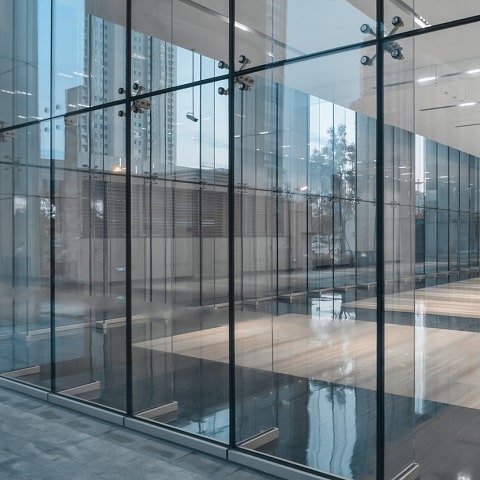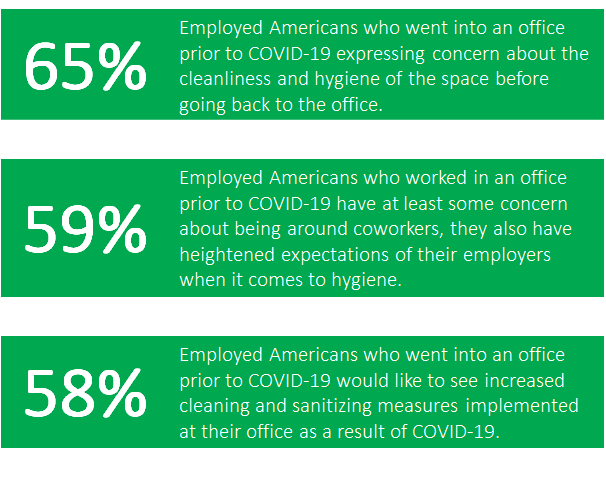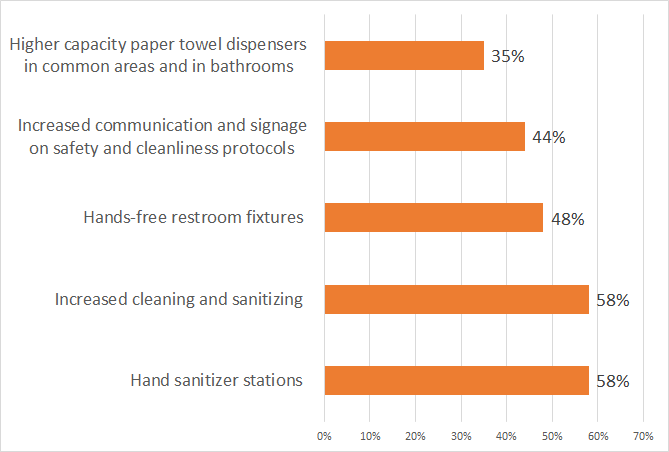
Return to Work and Easing Anxiety Around Employee Health and Safety
After more than a year of working remotely, a growing number of companies are preparing for a return of employees to the office largely due in part to vaccination adoption. The most recent office survey conducted by the Partnership for New York City found that 62% of office workers expect to be back in the office by Labor Day, as compared to March 2021 at which time only 45% of workers held that expectation.
As workplaces are working towards implementing their return to work policies, not all employees feel at ease with the transition and are worried about overall employee health and safety. Essity, a leading global hygiene and health company, recently published the results of its “Return to Workplace” survey, conducted online on its behalf by The Harris Poll to better understand the hygiene issues that are of greatest concern to employees as they transition back to the office.
The survey provides insights into the attitudes and behaviors towards personal and workplace hygiene, sanitation, and cleanliness, as well as what employees expect at work when they return. Reviewing the survey results, businesses will find that how they approach workplace hygiene and overall facility cleanliness will make a significant impact on employee anxiety.
“Return to Work” Survey Results
While the world works to close the door on the COVID pandemic, employers have to ask themselves if they are ready to re-open and prepared to operate a safe and healthy working environment. Essity undertook this survey to prompt employers to ask themselves these questions and then provided the insights needed to develop back-to-work plans with enough time to implement changes.
To no surprise, the results showed that office workers have a significant concern about office hygiene and cleanliness. Specific key findings from the survey include:

The overwhelming majority of American adults still believe increased cleaning and sanitizing are important in public places, such as doctors’ offices/healthcare facilities (90%), restaurants (89%), hotels (88%), theaters (88%), fitness centers (87%), retail stores (86%), and entertainment facilities (stadiums/museums) (86%)
The Role of Employers in Calming Return to Work Anxiety
One thing for sure, as reflected in the survey results, is that employees are counting on their employers to help ease their nerves and reassure their employee health and safety. In fact, 84% of employed Americans who went into an office prior to COVID-19 are confident that their employer is/will enforce proper hygiene protocols in the office.
And what that means is much more than simply having hand sanitizer available throughout the office. Of the respondents surveyed, 89% are looking to see extended cleaning/hygiene measures implemented at their office, including:

What Employers Can Communicate
Business owners, facility managers and building service contractors and have a multitude of ways to help occupants feel more comfortable and confident that they can rely on a clean workspace, from the public restrooms to the common eating areas. In most any area, one of the important and visual steps employers can take is to publicize and communicate the changes to their cleaning and disinfecting protocols.
Something as simple as a cleaning schedule or hand washing best practices poster may seem commonplace, but really what you are doing is visually communicating that you care about the level of clean in your facility, while also triggering a positive perception of your building. For example, by posting a restroom cleaning schedule your facility occupants can see the efforts being made to maintain a healthy environment.
Another opportunity for employers to take advantage of is communicating with employees about the safety measures they have taken to create an effective return-to-office process. Management could communicate in a letter, email or online meeting the numerous changes to their company policies and procedures, which could include the following messages, for example:
- All employees entering the building are screened for COVID-19 symptoms and exposure risk.
- No visitors are permitted to enter the buildings (employees only).
- Common areas and high contact surfaces are cleaned daily.
- Workspace layouts and seating arrangements are modified to support social distancing.
- Communal areas have reduced seating and capacity limits.
- Business travel remains restricted to essential travel only.
What Employers Can Implement
From the moment employees step through the door, visible cleaning cues will quickly spark certain psychological hints about what’s ahead. Understanding the importance of first impressions and emotional responses is a key component to helping employees feel that effective facility cleaning best practices have been implemented.
Positioning your facility to appeal to positive perceptions is critical, especially with return to work initiatives. Take for example facility restrooms. They are always the #1 complaint area in facilities. Restrooms will be even more scrutinized than ever before when people return to work. The space can look shiny and spotless, but with a lack of visual cues – professional restroom cleaning tools, cleaning solutions, signage, etc. – how can occupants trust that faucets, door handles and restroom floors are in reality, clean?
Just how important is the cleaning equipment you select for your facility cleaning and disinfecting? It goes far beyond how they look (though remember visually, this is very important) and includes the level of clean they leave behind. For companies committed to investing in the best commercial cleaning tools to get the job done right, we recommend the following features when evaluating cleaning products for your facility:
- Microfiber Cleaning
Microfiber cloths, mop pads and floor cleaning systems exceed cotton mops in cleaning effectiveness. In fact, replacing traditional cotton string mops with a commercial microfiber mop system can reduce bacteria by 96%.
- Dual Chamber Buckets
Most commercial cleaning professionals utilize a single bucket mopping system, meaning they’re mopping floors with dirty solution. Without clean solution, the process aimed at cleaning is leaving behind potentially dangerous germs and bacteria. For a deeper level of clean, a dual bucket floor cleaning system separates clean and dirty solution, preventing contaminated solution from ever entering the cleaning process.
- SmartColor™ Cleaning Technology
A color-coded cleaning system keeps tools organized and separated into their correct areas of use or cleaning task, reducing bacteria and cross-contamination between high and low-risk areas. So, as you move between different areas, germs do not cross into your next area of work.
- ‘Cleaning from a Distance’ Design
Any tool that gives custodial staff the added advantage of keeping their hands at a safe distance from surface contaminants is a win-win any time, but especially when combating infectious disease spread. Telescopic and extendable poles, when used in conjunction with a full range of attachments – washers, squeegees, dusters, brushes, bulb changers – keep staff away from potentially harmful germs and debris. Additionally, tools like the Unger Stingray glass cleaning system uses 39% less chemicals than traditional cloth window cleaning, limiting contaminants from chemical cleaning solutions from entering the air.
Creating a Healthier, Safer Work Space for Your Employees to Return to
With over 50 years’ experience in the field, we’ve helped facilities manage and protect the health and safety of their occupants with professional cleaning equipment designed to deliver the highest level of clean. If we can help you evaluate your current cleaning practices and commercial cleaning products, please contact us or request a one on one consultation.
